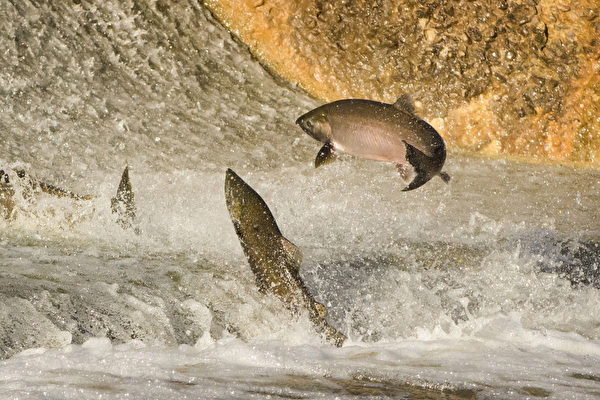With the completion of the largest dam removal project in American history approaching, salmon will soon be able to freely swim along the major waterways near the California-Oregon border – the Klamath River and its tributaries, for the first time in over a century.
According to the Associated Press, this week the construction team will use excavators to dismantle rock barriers upstream of the nearly completely removed dams – the Iron Gate Dam and the Copco No. 1 Dam, which were originally used to alter the flow of water. This action will allow the river to return to its natural course along the historic river channel, providing a pathway for the fall Chinook salmon, also known as King Salmon, to reach their main spawning grounds.
Leaf Hillman, the ceremonial leader of the Karuk Tribe, stated, “Seeing the river return to its natural path, dams disappearing, is a good sign for our future.” The Karuk Tribe has spent at least 25 years advocating for the removal of dams on the Klamath River. For them and other communities in the region, salmon is not only a cultural symbol but also holds deep spiritual significance.
The process of removing the four giant dams on the Klamath River has begun, with the removal project expected to be completed in a month. This nationwide environmental movement aims to restore rivers to their natural flow, and rebuild the ecosystem for fish and other wildlife.
According to data from the advocacy group American Rivers, as of February, over 2,000 dams have been removed in the United States, with most dismantled in the past 25 years, including dams on the Elwha River in Washington state. This river flows from Olympic National Park into the Strait of Juan de Fuca and the White Salmon River, a tributary of the Columbia River, where the Condit Dam was removed.
Joshua Chenoweth, a senior river ecologist from the Yurok Tribe, stated, “Now, the process of river self-restoration truly begins.”
“Humanity can do many things to assist this process, but from the experiences with the Elwha, Condit, and other dams, we understand that the key is simply removing the dams, and then the river has a remarkable ability to gradually restore its natural state,” he said.
The Klamath River used to be the third-largest salmon-producing region on the West Coast. However, since the power company PacifiCorp built dams for hydropower generation from 1918 to 1962, the natural flow of the river was disrupted, leading to disturbances in the life cycle of local salmon and a sharp decline in fish populations. Most of these salmon spend most of their life cycle in the Pacific Ocean but return to their birth rivers to spawn.
In 2002, low water levels and high temperatures caused a bacterial outbreak, resulting in the death of over 34,000 fish, the majority being Chinook salmon. This triggered decades of advocacy from tribes and environmental groups, ultimately leading to the approval of the dam removal plan by federal regulators in 2022.
Since then, the smallest of the four dams, the Copco No. 2 Dam, has been removed. Construction teams simultaneously drained the reservoirs of the other three dams, commencing the dismantling in March.
Along the Klamath River, the removal of the dams will not significantly affect the power supply. At full capacity, the energy produced by these dams accounts for less than 2% of PacifiCorp’s energy.
The project is estimated to cost around $500 million, with the expenses being covered by taxpayers and PacifiCorp’s ratepayers.
However, when salmon will quickly return to their traditional habitats and when the river will fully heal remain unknown. Nonetheless, reports have shown that salmon have already been spotted at the river mouth, beginning their journey upstream. Michael Belchik, a senior water resources policy analyst from the Yurok Tribe, is optimistic that salmon will soon be able to pass the Iron Gate Dam smoothly.
“I believe we will see some results soon,” he stated. “I am confident we will witness the fish passing over the dam. If not this year, then certainly next year.”
Mark Bransom, the CEO of the Klamath River Renewal Corporation, mentioned that after the removal of the Elwha River dams, it took the Lower Elwha Klallam tribe about ten years to restore fishing activities. The non-profit organization is responsible for overseeing the progress of related projects.
“I don’t know if anyone knows exactly what the return of the fish means,” he said. “It takes some time. You cannot erase the damage and impact on the river system of the past 100 years overnight.”

